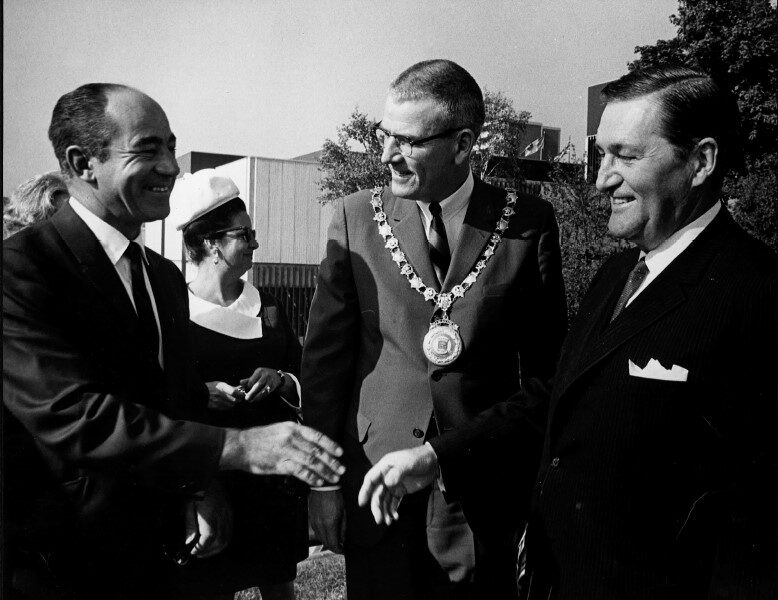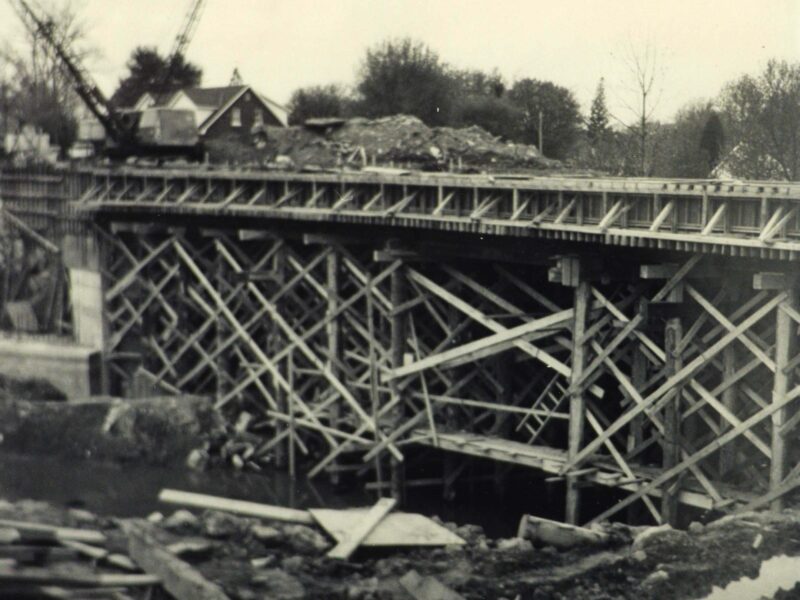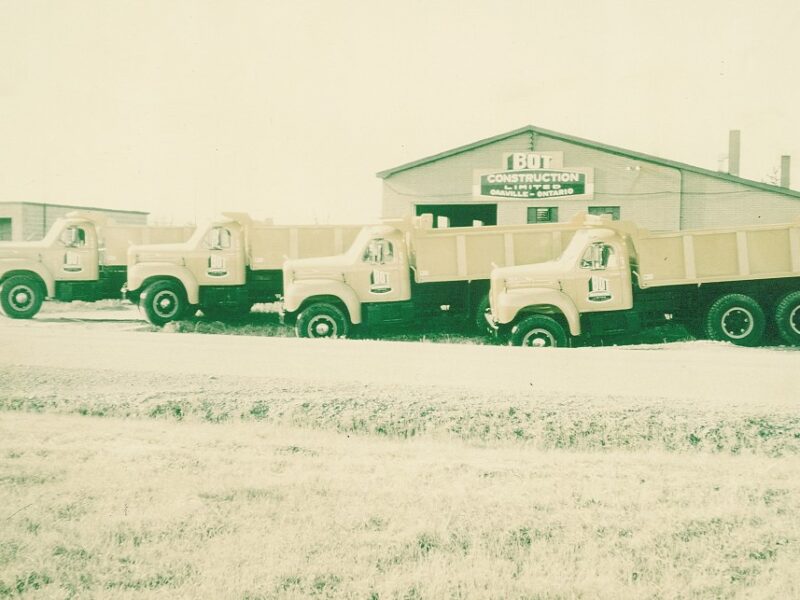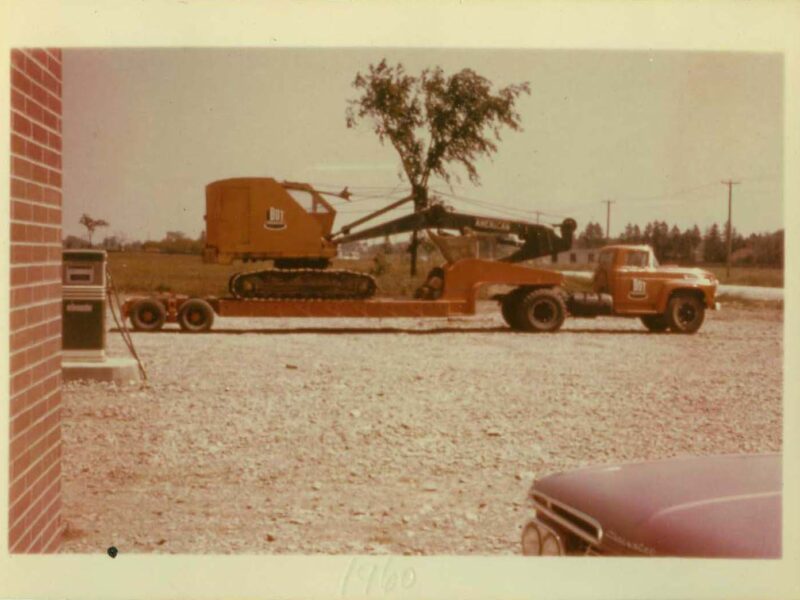Building capacity over the decades
Silvio Bot had a passion and talent for construction, and an entrepreneurial drive to build a company that would do it well. In 1957, he started a small, three-person concrete forming operation, in Oakville, Ontario. In the 1980’s, he prepared for work along the Highway 11/69/17 corridors by studying the topography of Ontario’s northern region from the window of his Cessna 185. Always a hands-on leader, in 1989, he was on the bridge deck of the Highway 401/410 interchange, to celebrate Bot Construction’s completion of Ontario’s then longest, multi-level, post-tensioned structure – and to mark the company’s transition from forming to full service infrastructure contractor.
Under Silvio’s focused direction, and as leadership of the company passed from founder to the next generation in the 1990’s, we continued to deepen our expertise and build our equipment capacity.
Highways and Hydro Electric Infrastructure in the Expansion Decades
Bot Construction grew in step with the strong demand for construction services that marked the expansion years of the 1950’s and 1960’s, taking on projects that improved the road network connecting the manufacturing heartland of central Ontario to commercial markets and population centres in other regions of the province. Our expertise in highway expansion, bridges, and large earth and rock works, for which Bot Construction is known today, was gained building roads through the granite bedrock and muskeg swamp of the Precambrian Shield of northern Ontario during these decades.
By the close of the 1970’s, our portfolio of completed projects included major urban expressways and bridges, such as for the E.C. Row Expressway through Windsor, Ontario, the Highway 417 East Ottawa expansion, and the new Highway 403/QEW interchange at Burlington. Bot was also one of the first construction companies to set up camp at James Bay, Quebec, in 1972, to begin a ten-year project building access roads and constructing 31 dykes and dams for the La Grande Hydroelectric complex.
The history of Bot Construction is also rich with stories of Canada’s far north. During the 1990’s, we undertook the complex logistics of moving materials and equipment down the Mackenzie River, through Inuvik to Tuktoyaktuk and out along the Arctic coast line, to build short range radar stations, under contract with the Canadian Department of National Defense. The installation work was completed over 1,000 km from the Alaska border, east to Coppermine, Nunavut.
The selected examples of our works chronicled below illustrate our steady and deliberate growth over the decades.
- Highway 417 /Queensway expansions, Ottawa (1973, 1975, 1977)
- Highway 403/QEW interchange (1979)
- Terminals 1, 2 and 3, Lester B. Pearson, Toronto International Airport, access roads/structures (1978, 1989 and 2001)
- Highway 401/410 interchange, post-tension fourth level structures (1989)
- Highways 637, 17, 64, Kilarney, Espanola (1989)
- Highway 400/407 cloverleaf interchange with six post-tension bridge structures (1990)
- Highway 69, Sudbury ( 1990)
- Dundas Street Bridge, Trenton, Ontario, North America’s first multi-span bridge deck constructed and slid into place (1990)
- Highway 401/Sir John A. McDonald interchange, Kingston (1992)
- Highway 416 expansion, West Ottawa (1996)
- Ontario’s first Total Project Management (TPM) contract to design/build the Queen Elizabeth Way (QEW), Niagara Region (1997)
- Highway 407 West, Ontario’s first design build toll highway (2001)
- Eastmain River Tunnel Diversion, Eastmain Quebec (2004)
- Highway 403, High Occupancy Vehicle Lanes, Mississauga (2006)

